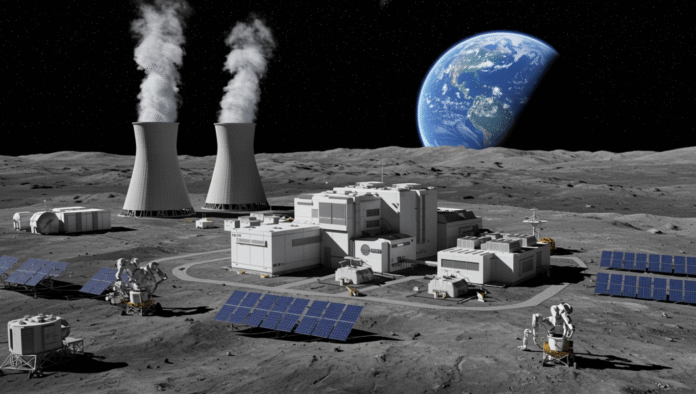Key Point Summary – Nuclear Reactor On the Moon
- Sean Duffy orders NASA to fast-track a 100 kW lunar nuclear reactor by 2030
- Move comes amid steep NASA budget cuts and focus on crewed missions
- China and Russia joint project raises U.S. concerns over lunar dominance
- Reactor could power astronauts and protect U.S. access on the moon
- Plan also accelerates replacement of the aging International Space Station
- At least two private companies to get contracts for new stations
- Timeline puts U.S. and China in direct race for lunar presence
NASA is about to throw the space race into overdrive. Acting on orders from interim administrator and Transportation Secretary Sean Duffy, the agency will fast-track plans for a nuclear reactor on the moon — with an ambitious 2030 launch target.
The push comes as China and Russia are moving ahead with their own lunar projects. Internal documents obtained by POLITICO warn that the first country to plant a reactor on the moon could claim a “keep-out zone,” potentially locking rivals out of key areas.
Duffy’s First Big Move At NASA
Duffy, a former Fox News host, took over NASA leadership after President Trump pulled Jared Isaacman’s nomination. Despite criticism over holding two federal jobs, Duffy has made it clear he plans to shape policy. His nuclear reactor directive is his first major shot.
The order tells NASA to seek industry bids for a 100-kilowatt system — over twice the power of earlier plans — and to appoint a program leader within 60 days. The clock is ticking, as China aims to land its first astronaut on the moon around the same time.
A Budget Axe Meets Big Ambitions
The White House’s proposed budget boosts human spaceflight funding for 2026 but slashes other NASA programs, including science missions, by nearly half. That means Duffy’s plan has to move fast, and possibly lean more on private industry.
NASA had previously funded a 40 kW reactor study with a goal of deployment in the early 2030s. Duffy’s order accelerates that timetable and signals a willingness to take risks in order to keep the U.S. ahead.
The Stakes: Lunar Control And Survival
Officials warn the lunar reactor isn’t just about power — it’s about control. Whoever controls energy on the moon controls long-term human presence there. Without it, U.S. astronauts could be forced to operate in a more limited zone, ceding strategic ground to Beijing and Moscow.
The Pentagon recently scrapped a nuclear-powered rocket program, but NASA insists nuclear technology is still vital to deep-space exploration.
Replacing The Space Station Before China Takes Over
Duffy’s plan also orders NASA to speed up replacing the creaking, leaky International Space Station. The goal: have at least two commercial stations ready by 2030, before the ISS is retired. Without that, China would have the only permanent crewed platform in orbit.
Axiom Space, Vast, and Blue Origin are among the companies vying for contracts. NASA wants to award them within six months of releasing its request for proposals — a sprint by space program standards.
Public And Political Reactions
The proposal is already sparking fierce debate. Supporters call it visionary, warning that hesitation could hand the moon to America’s rivals. Critics see it as reckless — both financially and politically — especially given the deep budget cuts to science.
There’s also unease over planting nuclear technology on another world. Some lawmakers worry about accidents during launch or on the lunar surface. Others say the U.S. can’t afford another Cold War-style space race.
Outlook: Countdown To A Lunar Power Struggle
If Duffy’s timetable holds, the next five years will be an all-out sprint — with private companies, political opponents, and global rivals all in the mix. Whether America wins the second space race may depend on whether a reactor lights up the moon before China’s flag plants beside it.




